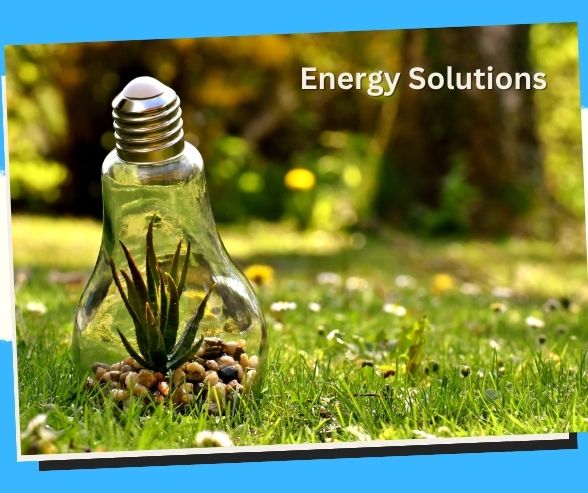
Make Every Watt Count: Creating a Net-Zero Energy Home That Works for You
Transform your living space into an energy-efficient haven with our step-by-step guide to creating a net-zero energy home, designed to help you reduce your carbon footprint and save on utility bills.
Building for Tomorrow: A Guide to Creating a Net-Zero Energy Home
As concerns about climate change and energy sustainability grow, the concept of net-zero energy homes is gaining traction as a viable solution. A net-zero energy home is one that generates as much energy as it consumes over the course of a year, resulting in minimal carbon emissions and environmental impact. In this comprehensive guide, we’ll explore the principles of net-zero energy homes, practical strategies for achieving net-zero status, and tips for homeowners looking to reduce their carbon footprint. Let’s embark on a journey towards sustainable living! 🏡♻️💡
Understanding Net-Zero Energy Homes
A net-zero energy home is designed and built to minimize energy consumption and maximize energy production from renewable sources. By incorporating energy-efficient technologies, passive design strategies, and renewable energy systems, net-zero homes aim to achieve a balance between energy supply and demand, resulting in zero net energy consumption from the grid.
Benefits of Net-Zero Energy Homes
Net-zero energy homes offer numerous benefits, including:
- Reduced Energy Costs: By generating renewable energy onsite, net-zero homes can eliminate or significantly reduce electricity bills, resulting in long-term savings for homeowners.
- Environmental Sustainability: Net-zero homes produce minimal carbon emissions and environmental impact, helping to mitigate climate change and reduce reliance on fossil fuels.
- Enhanced Comfort and Health: Energy-efficient design features, such as superior insulation, high-performance windows, and advanced ventilation systems, contribute to improved indoor comfort and air quality for occupants.
- Increased Property Value: Net-zero energy homes are in high demand among environmentally conscious buyers and may command a premium in the real estate market, providing a return on investment for homeowners.
Key Components of Net-Zero Energy Homes
Achieving net-zero energy status requires careful planning and integration of various components, including:
- Energy-Efficient Building Envelope: A well-insulated and airtight building envelope is essential for minimizing heat loss and air leakage, reducing the need for heating and cooling.
- High-Performance Windows: Energy-efficient windows with low-e coatings and insulated frames help prevent heat transfer and improve indoor comfort while maximizing natural daylighting.
- Energy-Efficient Appliances: Select ENERGY STAR® rated appliances and lighting fixtures to reduce energy consumption for cooking, laundry, lighting, and other household activities.
- Renewable Energy Systems: Install solar photovoltaic (PV) panels or other renewable energy systems, such as wind turbines or solar water heaters, to generate clean electricity and heat for the home.
- Energy Monitoring and Management: Implement energy monitoring and management systems to track energy usage, optimize performance, and identify opportunities for further energy savings.
Strategies for Achieving Net-Zero Energy
To achieve net-zero energy status, consider implementing the following strategies:
- Energy-Efficient Design: Design your home with passive solar principles, optimal orientation, and shading strategies to minimize energy demand and maximize solar gain.
- Energy Modeling: Use energy modeling software to simulate energy performance, identify potential areas for improvement, and optimize the design for maximum energy efficiency.
- Efficient HVAC Systems: Install energy-efficient heating, ventilation, and air conditioning (HVAC) systems with high-efficiency heat pumps, air-source or ground-source heat exchangers, and programmable thermostats.
- Advanced Insulation: Use high-performance insulation materials, such as spray foam or rigid foam boards, to achieve superior thermal resistance and minimize heat loss through walls, roofs, and floors.
- Air Sealing: Seal gaps, cracks, and penetrations in the building envelope with air barriers, caulking, and weatherstripping to reduce air leakage and improve overall energy efficiency.
- Water Conservation: Install water-saving fixtures, such as low-flow faucets, toilets, and showerheads, to minimize water usage and reduce energy consumption for heating water.
Tips for Homeowners
If you’re considering building or retrofitting your home for net-zero energy, here are some useful tips to get started:
- Consult with a Design Professional: Work with an architect, engineer, or energy consultant experienced in net-zero energy design to develop a comprehensive plan tailored to your specific needs and goals.
- Set Realistic Targets: Establish achievable goals and milestones for energy performance, considering factors such as budget, climate, site conditions, and local regulations.
- Invest Wisely: Prioritize investments in energy-efficient features and renewable energy systems that offer the highest return on investment and contribute to long-term energy savings and environmental benefits.
- Educate Yourself: Take advantage of resources, workshops, and training programs offered by energy efficiency organizations, green building councils, and utility companies to learn about net-zero energy principles and best practices.
- Monitor and Maintain: Regularly monitor energy usage, performance metrics, and system operations to ensure optimal efficiency and address any issues or deficiencies promptly.
Benefits of Creating Net-Zero Energy Homes
- Reduced Carbon Footprint: Net-zero energy homes minimize reliance on fossil fuels, leading to significant reductions in greenhouse gas emissions, thus mitigating climate change impacts.
- Energy Independence: By generating their electricity onsite, net-zero energy homes reduce dependence on centralized power grids, enhancing energy security and resilience.
- Lower Energy Bills: Energy-efficient design features and renewable energy systems help lower utility bills, saving homeowners money in the long run.
- Improved Indoor Comfort: Net-zero energy homes prioritize insulation, ventilation, and thermal comfort, providing occupants with healthier and more comfortable living spaces.
- Enhanced Property Value: Net-zero energy homes command higher resale values due to their energy efficiency, environmental benefits, and appeal to environmentally-conscious buyers.
- Long-Term Savings: While upfront costs may be higher, the long-term savings from reduced energy bills and potential incentives outweigh initial investment expenses.
- Resilience to Power Outages: With backup power systems such as battery storage, net-zero energy homes can remain operational during grid outages, ensuring continuous access to electricity.
- Environmental Stewardship: Creating net-zero energy homes demonstrates a commitment to environmental stewardship and sustainable living practices, contributing to broader sustainability goals.
- Health Benefits: Net-zero energy homes prioritize indoor air quality and comfort, reducing exposure to pollutants and allergens, which can improve occupants’ health and well-being.
- Future-Proofing: Net-zero energy homes are positioned to withstand future energy market trends, regulatory changes, and climate-related challenges, ensuring long-term viability and adaptability.
Case Studies: Real-Life Examples of Net-Zero Energy Homes
- The Smith Residence: The Smith family transformed their existing home into a net-zero energy home by upgrading insulation, installing energy-efficient appliances, and adding rooftop solar panels, resulting in reduced energy bills and carbon emissions.
- The Greenfield Eco-Community: The Greenfield Eco-Community in Vermont comprises net-zero energy homes equipped with solar panels, energy-efficient HVAC systems, and smart home technologies, demonstrating the feasibility of sustainable community development.
- The Jones Retrofit Project: The Jones family retrofitted their older home to achieve net-zero energy status by adding insulation, upgrading windows, installing a ground-source heat pump, and incorporating solar panels, achieving energy independence and cost savings.
- The Urban Renewal Initiative: Urban renewal projects in cities like Portland, Oregon, have led to the construction of net-zero energy homes and multifamily buildings, revitalizing urban neighborhoods and promoting sustainable urban development.
- The Off-Grid Cabin: Off-grid cabins in remote locations, such as the Pacific Northwest, rely on renewable energy sources like solar panels, wind turbines, and micro-hydro systems to achieve net-zero energy status, providing sustainable retreats amidst nature.
- The Community Solar Initiative: Community solar initiatives, such as those in California and Colorado, enable residents to subscribe to shared solar projects, allowing them to benefit from renewable energy without installing solar panels on their homes.
- The Passive House Movement: The Passive House movement promotes ultra-energy-efficient building standards, resulting in net-zero energy homes with minimal energy consumption and maximum thermal comfort, as demonstrated in projects worldwide.
- The Green Building Certification: Green building certification programs like LEED (Leadership in Energy and Environmental Design) recognize net-zero energy homes for their sustainable design features, energy performance, and environmental stewardship, driving adoption in the construction industry.
- The Solar-Powered Community: Solar-powered communities, such as the Babcock Ranch in Florida, integrate solar energy generation with energy-efficient homes, electric vehicle infrastructure, and smart grid technologies, creating sustainable and resilient neighborhoods.
- The Modular Home Revolution: Modular home manufacturers are embracing net-zero energy principles by designing prefabricated homes with energy-efficient features, allowing for faster construction timelines and customization options while reducing environmental impact.
Key Takeaways for Creating Net-Zero Energy Homes
- Energy Efficiency First: Prioritize energy efficiency measures such as insulation, air sealing, and high-performance windows to minimize energy consumption before implementing renewable energy systems.
- Renewable Energy Integration: Integrate renewable energy sources such as solar panels, wind turbines, and geothermal heat pumps to generate onsite electricity and heat, reducing reliance on fossil fuels.
- Passive Design Principles: Incorporate passive design principles such as orientation, shading, and natural ventilation to optimize thermal comfort and reduce heating and cooling loads, minimizing the need for mechanical heating and cooling systems.
- Whole-Home Approach: Take a holistic approach to building design, considering factors such as building envelope, HVAC systems, appliances, and occupant behavior to maximize energy efficiency and comfort.
- Smart Energy Management: Implement smart energy management systems and controls to monitor energy usage, optimize energy consumption, and prioritize renewable energy generation.
- Energy Storage Solutions: Install energy storage solutions such as batteries or thermal storage systems to store excess energy generated by renewable sources for use during periods of high demand or when renewable generation is low.
- Grid Connectivity: Maintain grid connectivity to ensure reliability and access to backup power when needed, while also exploring options for grid independence through energy storage and microgrid technologies.
- Lifecycle Cost Analysis: Consider the lifecycle costs of building materials, systems, and technologies to evaluate the long-term economic viability and environmental impact of net-zero energy home investments.
- Occupant Engagement: Educate occupants about energy-efficient practices, smart technology use, and the benefits of net-zero energy living to encourage behavior changes and maximize energy savings.
- Continuous Monitoring and Optimization: Regularly monitor energy performance, conduct energy audits, and implement optimizations to identify opportunities for further energy savings and improve overall system efficiency over time.
FAQ: Addressing Common Concerns About Net-Zero Energy Homes
- Q: What exactly is a net-zero energy home?
A: A net-zero energy home is a building that produces as much energy as it consumes over a year, typically achieved through a combination of energy-efficient design and renewable energy generation. - Q: Are net-zero energy homes only feasible in sunny climates?
A: Net-zero energy homes can be feasible in a variety of climates, including cloudy or cold regions, by optimizing building design, insulation, and renewable energy systems to suit local conditions. - Q: Are net-zero energy homes more expensive to build?
A: While upfront costs for net-zero energy homes may be higher due to energy-efficient features and renewable energy systems, long-term savings on energy bills and potential incentives can offset initial investments. - Q: Can existing homes be retrofitted to achieve net-zero energy status?
A: Yes, existing homes can be retrofitted to improve energy efficiency and integrate renewable energy systems, although the extent of retrofitting required will vary depending on the home’s condition and energy goals. - Q: Do net-zero energy homes require sacrifices in comfort or convenience?
A: Net-zero energy homes prioritize comfort and convenience through energy-efficient design, high-quality insulation, and modern technology, often resulting in superior indoor comfort compared to conventional homes. - Q: How do net-zero energy homes handle energy storage and grid connectivity?
A: Net-zero energy homes may incorporate energy storage solutions such as batteries or thermal storage systems to store excess energy for use when renewable generation is low, while maintaining grid connectivity for backup power and excess energy export. - Q: Are there government incentives available for building net-zero energy homes?
A: Many governments offer incentives, rebates, tax credits, or grants for energy-efficient home construction, renewable energy installations, or net-zero energy certifications to encourage sustainable building practices. - Q: What are the maintenance requirements for net-zero energy homes?
A: Maintenance requirements for net-zero energy homes are similar to those of conventional homes and include regular upkeep of building systems, appliances, and renewable energy equipment to ensure optimal performance. - Q: Can net-zero energy homes withstand extreme weather events?
A: Net-zero energy homes can be designed to withstand extreme weather events through resilient building materials, structural reinforcements, and backup power systems to ensure occupant safety and comfort during emergencies. - Q: How can I learn more about building a net-zero energy home?
A: There are many resources available, including government agencies, green building organizations, energy consultants, and online guides, that provide information and guidance on designing, building, and living in net-zero energy homes.
Conclusion: Building a Sustainable Future, One Home at a Time 🌿
Creating a net-zero energy home is an achievable and rewarding endeavor that offers numerous benefits for homeowners, communities, and the planet. By embracing energy-efficient design principles, renewable energy technologies, and sustainable practices, we can reduce our carbon footprint, enhance our quality of life, and pave the way toward a more sustainable future. Whether you’re building a new home or retrofitting an existing one, let’s work together to build for tomorrow and create a world of net-zero energy homes! 🏡♻️💡
Key Phrases
- Net-zero energy home
- Sustainable living
- Energy-efficient construction
- Eco-friendly residence
- Green building techniques
- Renewable energy integration
- Carbon footprint reduction
- Energy independence
- Environmental impact mitigation
- Sustainable home design
Hashtags
- #NetZeroEnergy
- #SustainableLiving
- #EnergyEfficientConstruction
- #EcoFriendlyResidence
- #GreenBuilding
- #RenewableEnergy
- #CarbonFootprint
- #EnergyIndependence
- #EnvironmentalImpact
- #SustainableDesign
Save/Share this story with QR CODE
Disclaimer
This article is for informational purposes only and does not constitute endorsement of any specific technologies or methodologies and financial advice or endorsement of any specific products or services.
📩 Need to get in touch?
Feel free to Email Us for comments, suggestions, reviews, or anything else.
We appreciate your reading. 😊Simple Ways To Say Thanks & Support Us:
1.) ❤️GIVE A TIP. Send a small donation thru Paypal😊❤️
Your DONATION will be used to fund and maintain NEXTGENDAY.com
Subscribers in the Philippines can make donations to mobile number 0917 906 3081, thru GCash.
3.) 🛒 BUY or SIGN UP to our AFFILIATE PARTNERS.
4.) 👍 Give this news article a THUMBS UP, and Leave a Comment (at Least Five Words).
AFFILIATE PARTNERS

World Class Nutritional Supplements - Buy Highest Quality Products, Purest Most Healthy Ingredients, Direct to your Door! Up to 90% OFF.
Join LiveGood Today - A company created to satisfy the world's most demanding leaders and entrepreneurs, with the best compensation plan today.



 Business Technology, Finance Technology & Information Technology
Business Technology, Finance Technology & Information Technology





